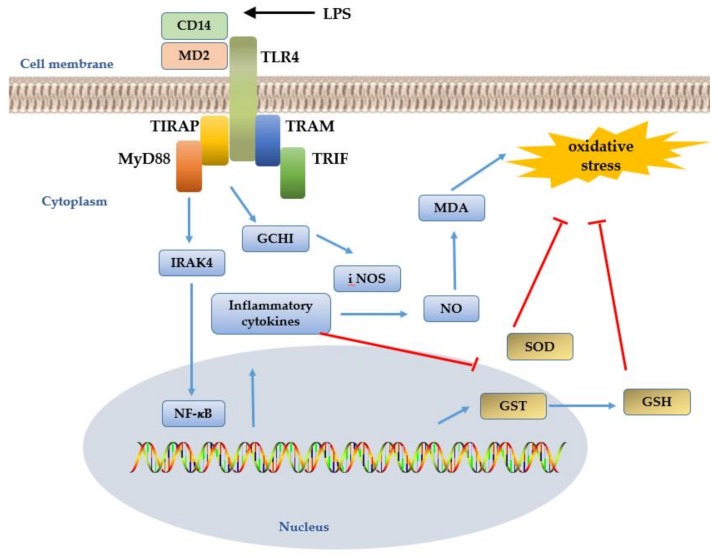Figure 3.
TLR4 signal pathway in oxidative stress [73,75]. TLR4 interacts with myeloid differentiation factor 2 (MD2), CD14, and specific ligand LPS receptors, then recruits downstream adaptors to activate MyD88− and TRIF-dependent pathway-mediated IRAK4-dependent NF-κB, which can trigger the transcription-promoting NO●. The GCHI-iNOS gene shows a significant increase in the expression of iNOS and NO, which accelerates the inflammatory response by reducing SOD activity and increasing MDA production. GSH eliminates free radicals and prevents oxidative damage.

